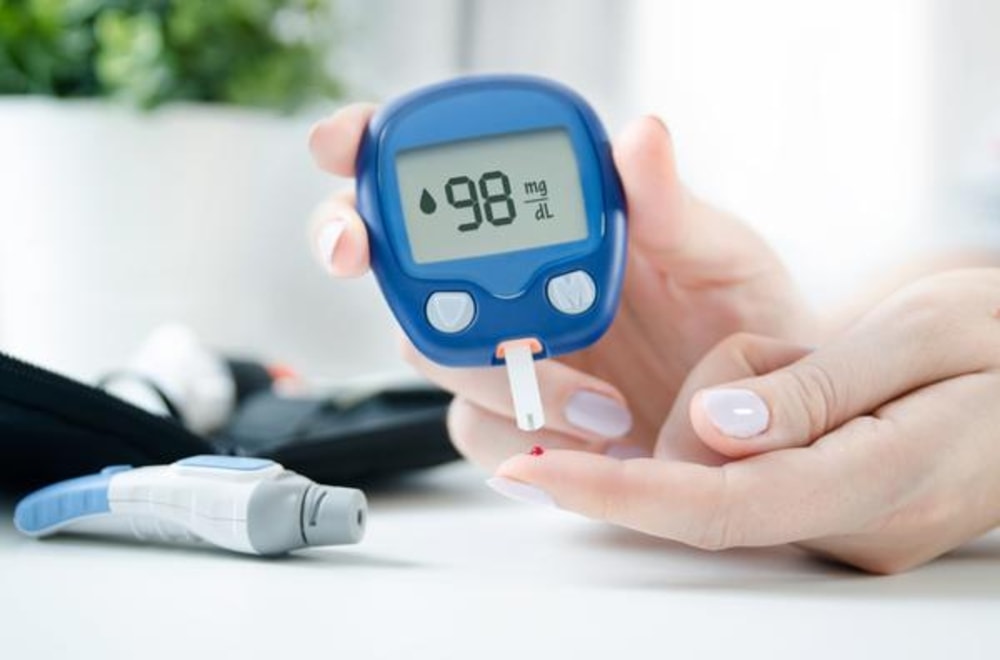What to Eat to Better Regulate Your Blood Sugar

While high blood sugar is the characteristic symptom of diabetes, your blood sugar can also be high even if you don’t have the condition. To avoid making high blood sugar worse, it is important to make good dietary choices and choose foods that can help you regulate your blood sugar.
Fiber-Rich Foods
Foods that are high in fiber can help regulate high blood sugar by slowing down digestion. This helps prevent blood sugar spikes and improve your body’s response to insulin, the hormone that removes excess sugar from the blood to keep blood sugar levels stable.
Broccoli or Broccoli Sprouts
Sulforaphane is a sulfur-containing compound naturally found in cruciferous vegetables, including broccoli and broccoli sprouts. Sulforaphane can help lower blood sugar by increasing glucose uptake from the bloodstream by regulating signaling proteins that control liver cells and their response to insulin.
Beans or Lentils
Legumes such as beans and lentils contain soluble fiber and resistant starch, which are digested much more slowly than simple carbohydrates and glucose molecules. Because soluble fiber is broken down at a slower rate, it helps reduce the rate of stomach emptying, increasing feelings of fullness and preventing spikes in blood sugar.
Citrus Fruits
While citrus fruits contain sugar, they do not raise blood sugar as much as other sugar-containing foods or simple carbohydrates because of their high fiber content in the skin and pulp. Because fiber slows down digestion, blood sugar stays stable, as sugar does not enter the bloodstream as quickly and the rate of sugar absorption is slowed down. This helps improve glycemic control and regulation of insulin release to keep blood sugar levels regulated.
Flax Seeds
Consuming flax seeds can help reduce the rate of glucose absorption since they are a rich source of fiber and omega-3 fatty acids, which help delay digestion and stomach emptying. This helps regulate blood glucose by preventing blood sugar spikes.
Healthy Fats
Healthy fats can help regulate high blood sugar by supplying anti-inflammatory and antioxidant benefits that can help regulate your metabolism and body’s response to insulin.
Fatty Fish
Consuming fatty fish can help lower inflammation throughout the body through the beneficial effects of omega-3 fatty acids. Decreased inflammation and oxidative stress help prevent disruption in blood sugar levels and insulin resistance.
Clinical research provides evidence that supports eight weeks of consuming 150 grams of salmon, a fatty fish, compared to cod, a lean fish, five times a week results in decreased blood sugar levels. It is suggested that the healthy fat content helps enhance sensitivity to insulin after a meal, increasing the release of insulin and helping uptake glucose from the bloodstream to stabilize blood sugar levels.
Nut Butter or Nuts
The healthy fat content of tree nuts, especially almonds and walnuts, can help improve glycemic control by improving the insulin signaling pathway to release insulin from pancreatic cells in response to increased blood glucose and transport of glucose into the muscles.
Tree nuts are also a rich source of magnesium, a mineral that helps regulate the ability of insulin to uptake glucose from the bloodstream to decrease blood sugar. Clinical evidence suggests that eating a one- to two-ounce serving of tree nuts, such as almonds or walnuts, every day over the course of eight weeks can help people with diabetes improve glycemic control by lowering fasting blood glucose levels as well as hemoglobin A1C levels.
Avocados
Avocados are a rich source of monounsaturated fatty acids similar to tree nuts, like almonds and walnuts, and have similar benefits of improving insulin sensitivity and glucose uptake to lower blood sugar levels. Also like tree nuts, avocados are rich in magnesium, which can also help regulate insulin and glucose uptake to lower blood sugar.
Clinical evidence suggests that incorporating either a half or full avocado into a meal can significantly decrease blood sugar spikes and overall blood sugar concentrations over the course of six hours after eating.
Eggs
Eggs, especially egg yolks, are a rich source of polyunsaturated fatty acids, minerals, and vitamins. They can help decrease inflammation throughout the body and disruptions to glucose metabolism. Clinical research provides evidence that consuming two eggs a day over the course of 12 weeks can help reduce fasting blood glucose levels and decrease the risk of developing type 2 diabetes by 40% over the course of a 14-year follow-up period.
Foods With Probiotics
Kefir and Yogurt
Yogurt and kefir, a fermented milk product, are also good sources of gut-healthy probiotic bacteria. It is suggested that probiotic bacteria can reduce inflammation and oxidative stress to prevent insulin resistance and produce polypeptide compounds that help increase the uptake of glucose into muscles.
A clinical trial investigating the effects of daily kefir consumption on blood sugar levels in people with type 2 diabetes found beneficial effects in reducing hemoglobin A1C levels. Further clinical research suggests that daily consumption of 150 grams of yogurt over the course of four weeks can lower blood glucose levels after eating and regulates the insulin response.
Summary
Some foods like those rich in fiber, beneficial fatty acids like omega-3, and probiotics can help you lower your blood sugar levels. Eating a balanced and healthy diet is the easiest way to manage your blood glucose and keep it stable.
Having high blood sugar can increase your risk of developing diabetes and other complications, but it can be effectively managed by making healthy food choices. Limiting your intake of sugar and simple carbohydrate foods and eating more foods rich in fiber, healthy fats, and probiotics can all help balance blood sugar levels and improve your body’s response to insulin. Before starting any new dietary program, consult with your doctor to make sure any changes you make to your diet are done safely.
References
This article was written by Kristen Gasnick. You can read the original text here.







